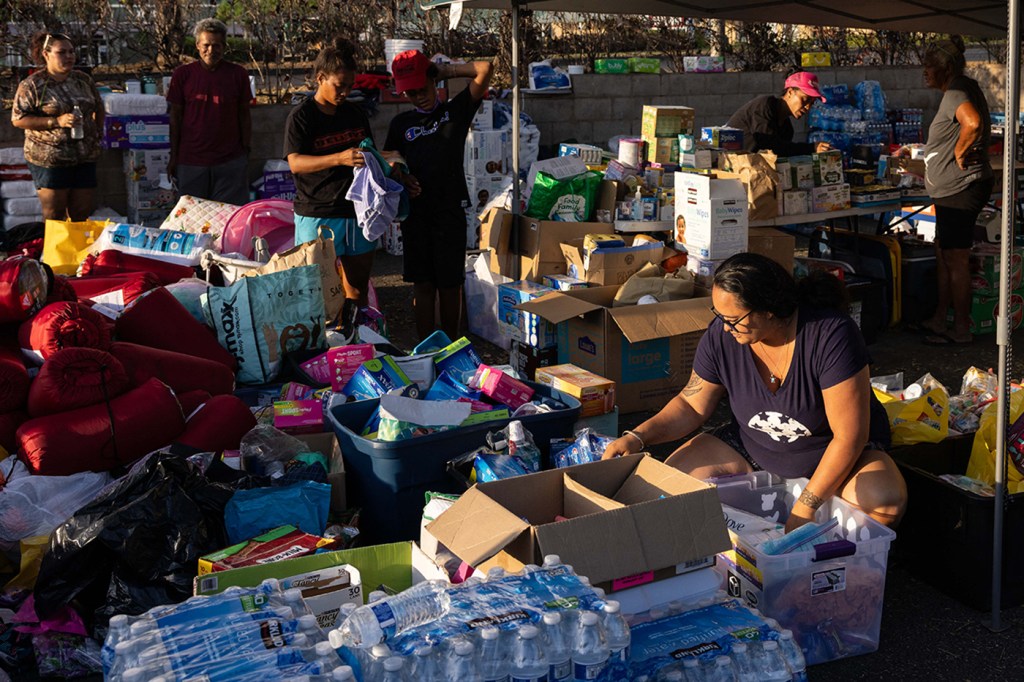How to help those impacted by the wildfires in Maui

The Hawaiian island of Maui was devastated by raging wildfires last week that led to the death of 96 people and the forced evacuation of thousands more. It’s been called the deadliest wildfire in modern U.S. history.
The community is still reeling, particularly for those in Lahaina, a historic center for Hawaiian cultural heritage that was completely destroyed by the fire, and people are understandably looking for ways to help. Volunteers, aid organizations and local, national and international nonprofits are on the ground already and helping to provide food and shelter.
With so many organizations actively involved in relief efforts, it can be hard to figure out where to start. Which organization should you donate to? How or what should you donate?
Patricia Illingworth, a professor of philosophy and business at Northeastern University and author of “Giving Now: Accelerating Human Rights for All,” says the best way to get started is by looking at a metacharity like Charity Navigator or Charity Watch. Metacharities evaluate the effectiveness of other charitable organizations and give them an easy to understand trustworthiness rating. Charity Navigator has already set up a page dedicated to organizations that are assisting with relief efforts in Maui.
Understanding whether an organization has previous expertise responding to disasters is key, Illingworth says, but “the focus should be on giving locally,” if possible.
“The importance of giving locally has been underscored by the kind of giving that Mackenzie Scott engaged in, which was really to look at small nonprofits and to defer to local organizations,” Illingworth says.
National or international organizations like the American Red Cross, United Way, Direct Relief and Feeding America are already on site assisting with people affected by the fires. But local organizations with deep-rooted ties and connections are often a better way to engage in what Illingworth calls “trust-based giving.”
“Donors should do their homework but then let the nonprofit decide how to spend the money and assume they’ll do a better job than they would by dictating what should be done,” Illingworth says.
The Hawaii Community Foundation, one of the oldest community organizations in the U.S., is currently responding through its Maui Strong Fund. When it comes to food, the Maui Food Bank is also helping keep people fed, with every $1 donated allowing the organization to provide four meals.
There are also local organizations that are helping pets and animals that have been affected by the fire, like the Maui Humane Society and East Maui Animal Refuge.
Meanwhile, an organization like World Central Kitchen splits the difference between global and local by working with local chefs and kitchens to provide food.
And when it comes to trustworthy sources, Illingworth advises against donating to crowdfunding campaigns.
“You just really don’t know what’s going on,” she says. “It’s better to go through an organization that has experience with disasters.”
Even if you’ve found an organization to give to, there’s then the question of what you should give. Is it better to give money or goods, like food, water or clothing?
Illingworth says donating money is often more effective, since it gives organizations on the ground the flexibility to respond to a constantly changing list of priorities. Jeff Hickman, spokesperson for the Hawaii Department of Defense, went so far as to tell Today Monday that with 1,100 people already in shelters and an overflow of donated water, baby formula and pillows, the best way to help is by sending money for local relief efforts.
“[Organizations] can decide ‘We need to spend the money on this instead of that,’ whereas if you send food or clothing or something like that, there’s more work involved in getting it to people efficiently or before it goes bad,” Illingworth says. “Giving the community control is probably a good idea in terms of being effective and having an impact.”
Cody Mello-Klein is a Northeastern Global News reporter. Email him at c.mello-klein@northeastern.edu. Follow him on Twitter @Proelectioneer.






